|
At the end of April we worked with a group from Hamstall Ridware to support an exhibition of wedding dresses at St Michael's and All Angels Church which took place over the May Bank Holiday weekend. We followed progress with our camera.
 The mannequins were collected from the Museum Collection Stores and taken over to the village by some of the volunteers.
 Setting up at the Church took a couple of days. As members of the local community brought in their dresses and recorded the details of their wedding memories the Archives and Heritage team assisted with mounting the dresses on the mannequins. Every dress was a different shape and size, and all had their own unique story. Some padding, a few pins and a final smooth down and each dress was ready to display.
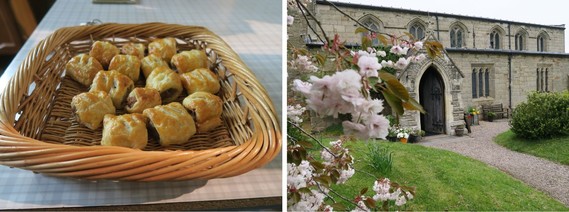 A well earned break! The husband of one of the volunteers had been baking sausage rolls - these went down well with a mid morning cup of coffee and a look round the church yard.
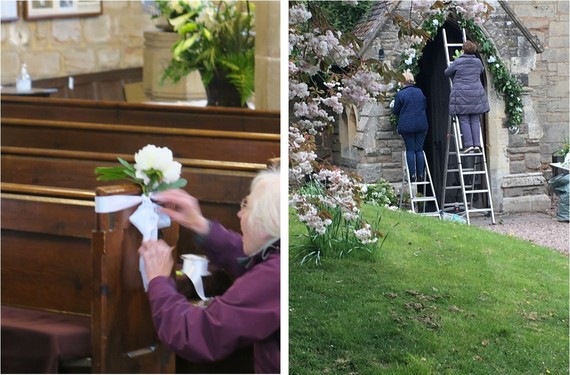 To enhance the wedding theme the Church flower team were on hand to decorate the building, inside and out.
 Gradually 23 different dresses were made ready for their big moment in the spotlight. This is the scene at the end of day one!
 The Archives and Heritage team headed back on the first day of the exhibition to view the finished displays. The sun shone, the dresses all looked amazing and the tea and cake were superb! Congratulations to everyone who took part - it was clear from the reactions of the visitors that the exhibition was a great success. Now to take it all down again . . .
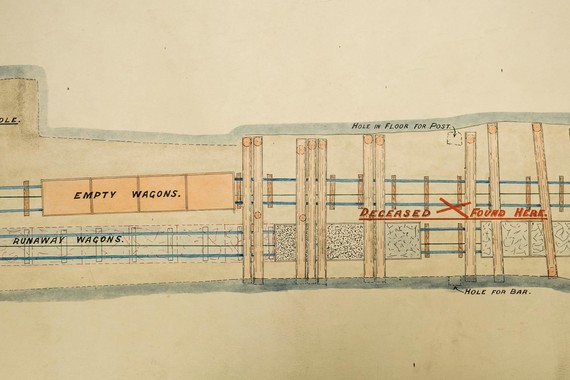 David Wood accident plan, 1911 (SD1404)
The Stoke-on-Trent City Archives have recently welcomed back their first volunteers and are also offering work experience opportunities to students involving a variety of cataloguing, indexing and packaging projects.
The team were joined by Cerys, a history student at Wrexham Glyndwr University. As part of her placement, Cerys catalogued a small collection of plans showing mining accidents in the early part of the 20th century.
It is well known that working conditions in mines were hazardous and the majority of the plans in the collection show fatal accidents. The plans would have been produced for the coroner to decide how the miners died and whether a full accident inquiry was necessary to determine the cause of the accident and apportion responsibility.
An index to miners involved in fatal accidents in North Staffordshire from the 17th to the 21st centuries can be found here.
This is what Cerys had to say about the plans:
"During my work experience, I had the opportunity of coming across plans showing accidents at Florence Colliery in Longton. There is a common theme to the accidents - the mines collapsing. However, there are two less common examples that I believe are very interesting. One is from 1911 and shows the plans of an accident involving runaway wagons. There is a x placed on the plan that shows where the deceased (David Wood) would have been hit.
The other is from 1913 and shows a case where the deceased (William James) was hit by a ricocheted piece of samsonite from an explosion. The piece stuck in his lung and he died two days later in hospital. However, it's not only James who is named on the plan; two others (Bates and Clark) were included in the report as potential witnesses.
Both of these plans are over 100 years old, and both (including several more in the same collection) can be accessed at Stoke-on-Trent City Archives (ref. SD 1404)."
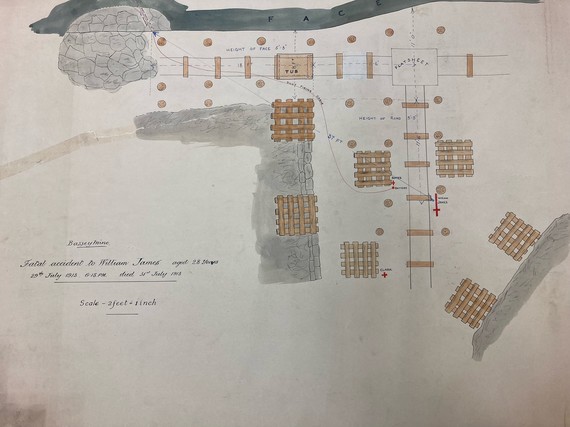 William James accident plan, 1913 (SD 1404)
A Case for the Ordinary: Staffordshire's asylums and the patient experience
Brampton Museum, Newcastle-under-Lyme, 21 May to 3 July 2022
Staffordshire has a hugely important archive collection for all three of its County Asylums. What makes this remarkable collection so valuable is not famous characters and unusual treatments, but the records of the patients themselves. The records describe in detail the experiences and treatment of ordinary people from all over the County from 1818 right through to the early NHS.
A two-year research project funded by the Wellcome Trust has uncovered the stories of individuals who have remained hidden from view for so long. A new searchable database, the Asylums Patient Index https://www.staffsnameindexes.org.uk/default.aspx?Index=U has been created together with a project blog which looks in more detail at individual stories - https://staffordshireasylumrecords.wordpress.com/
The culmination of the project is two exhibitions where visitors can find out more about the daily life inside the asylums, the treatments, staff and patients. The main exhibition will open at Brampton Museum on Saturday 21 May. For full details of opening times please visit the museum's website.
The smaller exhibition is touring Staffordshire’s Libraries and will be at Perton Library until 6 June and then at Cannock Library from 8 June until 4 July.
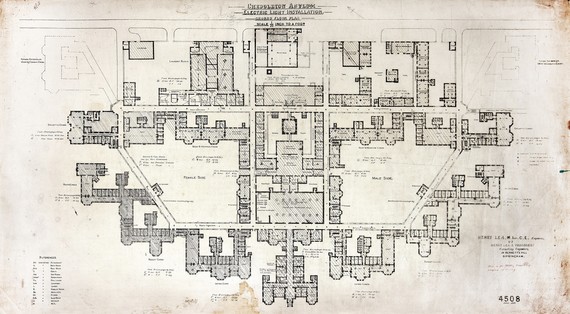 Ground floor plan of St Edwards, Cheddleton
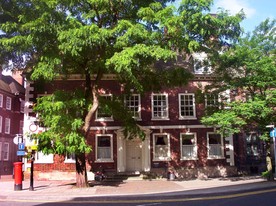 |
|
As our team of staff and volunteers are moving to temporary lodgings whilst the Staffordshire History Centre is under construction, we thought it might be interesting to uncover the history of our new home – Eastgate House.
Over a series of posts, we’ll look at some of the interesting features of the site and learn a bit about its history at the same time.
|
|
1683 Date Stone
The house looks Georgian and has the date 1683 above the middle window but is even older.
We know that there was a timber-framed structure here in 1663 and it belonged to William Palmer (not the Rugeley Poisoner!)
|
|
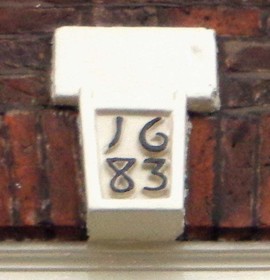 |
30 July to 4 August 2022
This summer school organised by Keele University (and now in its 45th year) is for those wishing to acquire or improve their skills in reading and transcribing medieval and early modern documents in both Latin and English. Taken mostly from English archives (both national and local), the documents are chiefly those which are used by historians rather than literary texts.
If you need an introduction to medieval Latin or palaeography (the study of medieval and early modern handwriting), or wish to enhance the knowledge that you already have and want to meet others with the same interests, then the Keele school is designed for you, and one of its main benefits is that students are able to build up their knowledge and confidence during the week.
Drawing on experience gained during the height of the Covid-19 pandemic, this year’s school is hybrid in form, and you may choose to attend in person or online. The school is taught in several small groups, but these are not in sessions in which students just listen to tutors and make notes. The emphasis is very much on learning the skills in reading and transcribing documents, and so involves a lot of active participation.
The approach is serious but friendly and attracts a wide range of people from both the UK and abroad: national, local, and family historians, along with archive students and postgraduate researchers. Many return year after year, taking the opportunity to seek advice from tutors and fellow students on their own research interests and problems.
The tutors all have considerable experience in teaching adult groups, and have their own expertise in a wide range of topics, beyond palaeography. They include senior archivists, university lecturers, and local history tutors.
For more information and to book a place please visit the website
|